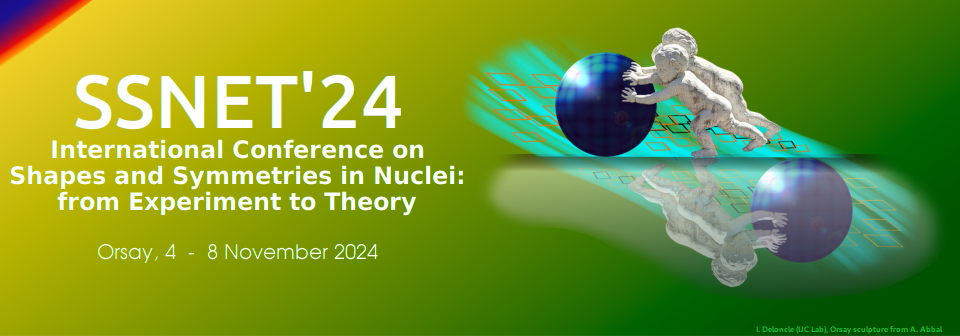Orateur
Description
In the traditional view, most heavy nuclei are like axially-symmetric prolate ellipsoids, rotating about one of the short axes. In the present picture, however, the triaxial shape appears in many heavy deformed nuclei, which actually well reproduce experimental data, as confirmed by state-of-the-art Configuration Interaction calculations. Two origins are suggested for the triaxiality: (i) binding-energy gain by the symmetry restoration for triaxial shapes, and (ii) another gain by specific components of the nuclear force, like tensor force and high-multipole (e.g. hexadecupole) central force. While the origin (i) produces basic modest triaxiality for virtually all deformed nuclei, the origin (ii) produces more prominent triaxiality for a certain class of nuclei. An example of the former is $^{154}$Sm, a typical showcase of axial symmetry but is now suggested to depict a modest yet finite triaxiality. The latter, prominent triaxiality, is discussed from various viewpoints for some exemplified nuclei including $^{166}$Er, and experimental findings, for instance, those by multiple Coulomb excitations obtained decades ago, are re-evaluated to be supportive of the prominent triaxiality. Many-body structures of the $\gamma$ band and the double-$\gamma$ band are clarified, and the puzzles over them are resolved. Regarding the general features of rotational states of deformed many-body systems including triaxial ones, the well-known J(J+1) rule of rotational excitation energies is derived, within the quantum mechanical many-body theory, without resorting to the quantization of a rotating classical rigid body. This derivation is extended to the J(J+1)-K$^2$ rule for side bands with K$\ne$0. Thus, two long-standing open problems, (i) occurrence and origins of triaxiality and (ii) quantum many-body derivation of rotational energy, are resolved.

